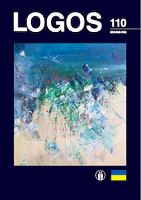Krikščioniškieji tikėjimo slėpiniai ir atskleistys medžio raižinyje „Nukryžiuotasis“
Christian Mysteries of Faith and Revelations in Woodcut “The Crucifix”
Author(s): Vilma KilinskienėSubject(s): Sociology of the arts, business, education, Sociology of Art, Sociology of Religion, History of Art
Published by: Visuomeninė organizacija »LOGOS«
Keywords: Woodcut; Crucifix; grapevine; Holy Saturday; apostles;
Summary/Abstract: The article analyses iconography in the woodcut of The Crucifix. The woodcut was created by an unknown Lithuanian carver in 1830, possibly at the monastery of Kretinga. It reveals aspects of the plot in the responsory from the Holy Saturday’s Morning mass and the relation between the Cross tree and the archetype of the World tree. Finally, it shows the relation between the images of the grapevine and the Eucharist and the God’s nation. Special attention is focused on the image and role of the ‘twelve grapes’ and apostles as sharers of the passion of Christ, which grew popular under the Franciscan tradition. The paper also includes a discussion of several other compositional solutions and/or pieces that feature the Crucifix, found in Lithuania and Germany. This woodcut has been chosen for analysis as a rare example of the Lithuanian and Western European iconographic Tree of Life Crucifix, which carries specific meanings.
Journal: LOGOS - A Journal of Religion, Philosophy, Comparative Cultural Studies and Art
- Issue Year: 2022
- Issue No: 110
- Page Range: 200-208
- Page Count: 9
- Language: Lithuanian

